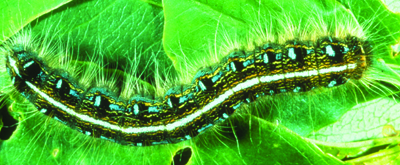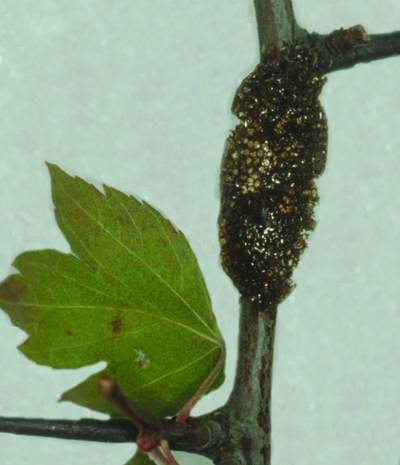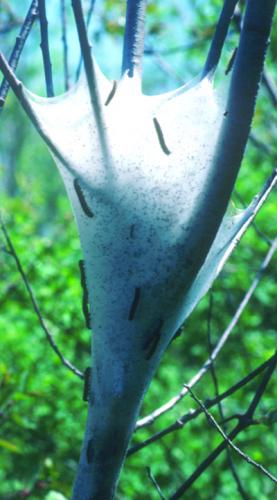Eastern tent caterpillar
July 30, 2015
Malicosoma americanum
Favored host plants
Apple, crabapple, hawthorn, cherry, mountain-ash, cotoneaster and other members of the rose family. Eastern tent caterpillars overwinter in egg masses on twigs of the host plant.

Mature larva of the eastern tent caterpillar.
Larvae normally hatch at about the same time that the host plant is beginning to leaf out. Look for young larvae around the time that Norway maple or Amelanchier are in bloom.

Egg masses can be found encircling twigs throughout the winter and early spring. This is an older egg mass where larvae have already hatched. The egg masses should be removed before young larvae hatch.
Management
Remove egg masses, or prune out webs while they are still small. Removing webs should be done on a cloudy or rainy day, when caterpillars are inside the web. If insecticide treatments are used, the web should be broken open, as the tents provide protection from some insecticide applications.


Left: Larvae create silken tents in the branch crotches and emerge from the tent to feed. Right: As larvae mature, they leave the host plant and look for a place to make their cocoons. The adults emerge in late June or early July
Print a PDF of this page: Eastern tent caterpillar



 Print
Print Email
Email




